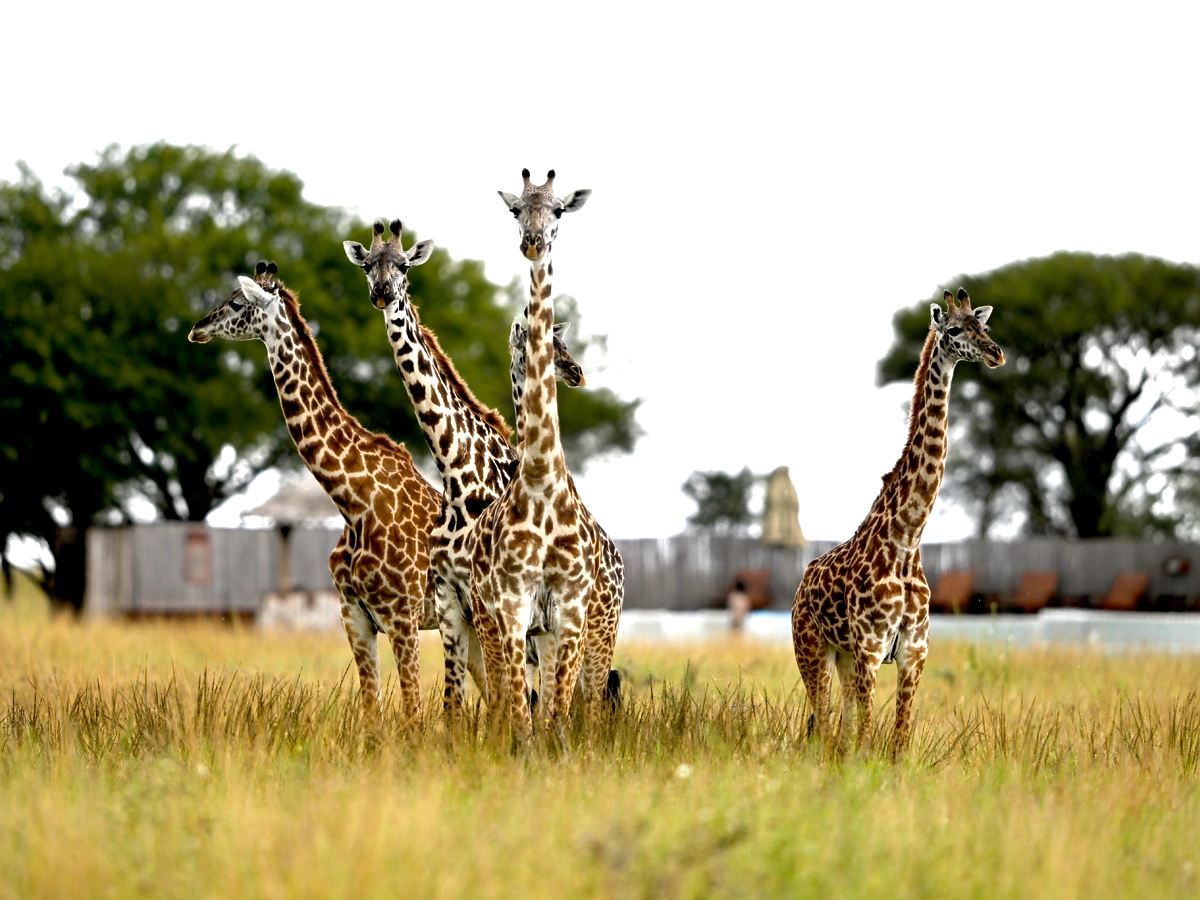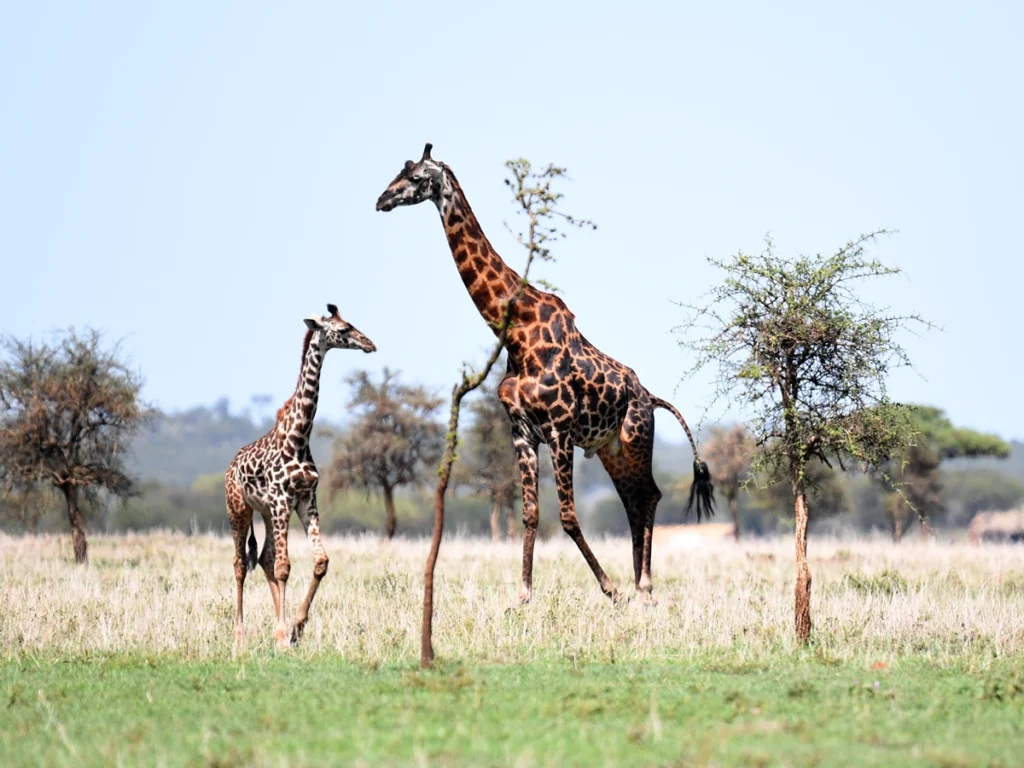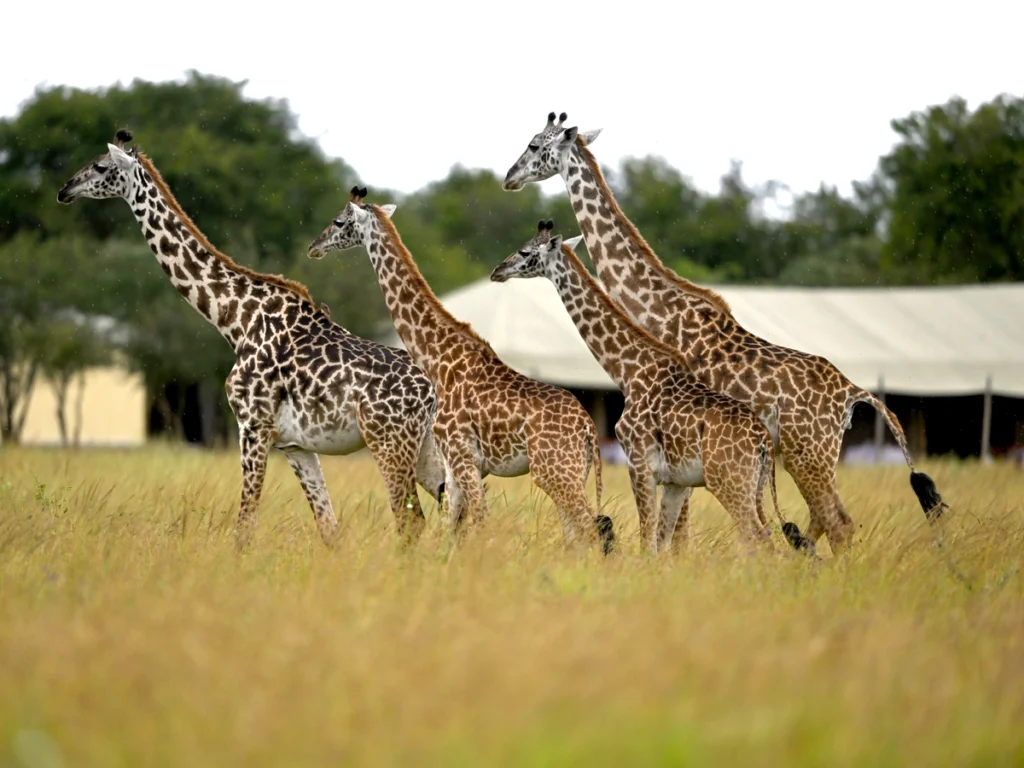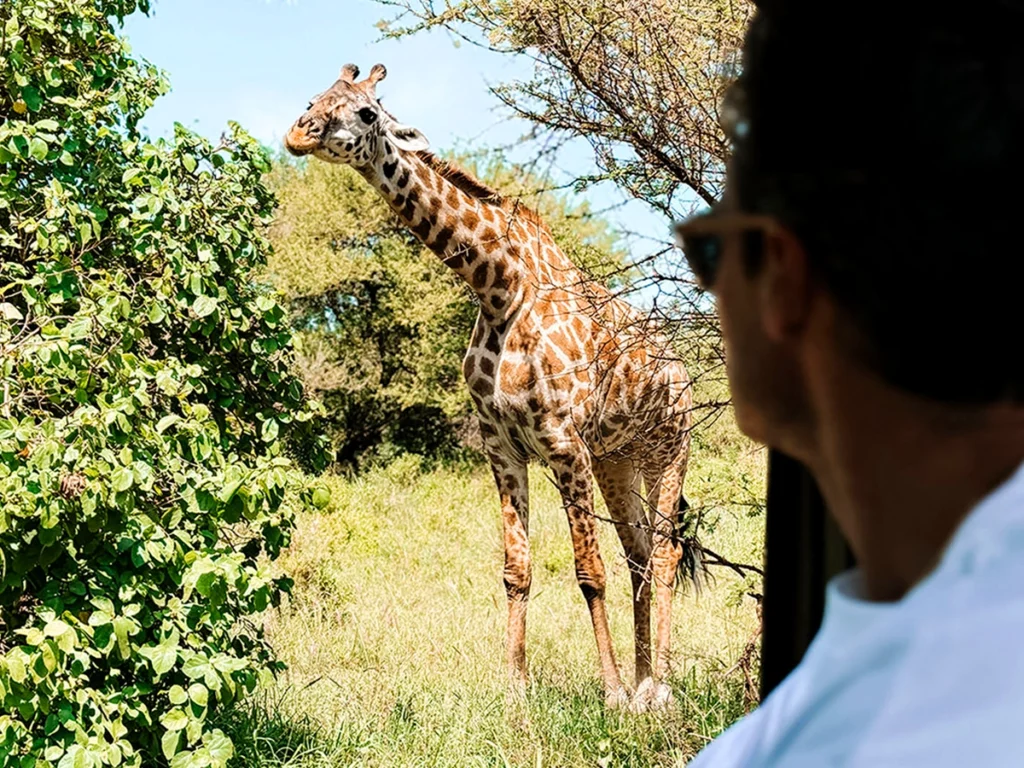
When people think of Africa, giraffes are often one of the first animals that come to mind. Tall, quiet, and peaceful, they’re always a favorite on safari, especially in the Serengeti where they’re often seen slowly moving across the plains or reaching up into the trees for a snack.
At One Nature Lodges, giraffes are part of the everyday landscape. You might see them near the lodge early in the morning or standing perfectly still in the distance, blending into the acacia trees. But there’s so much more to them than just their height and spots. In this post we’re diving into what makes giraffes so interesting, from how they grow up to how males and females behave differently and what life is like for them in the Serengeti.

A baby giraffe has quite the dramatic start to life because the mother gives birth standing up, so the calf drops to the ground. But within an hour, the calf is already standing and trying to walk. In the wild, especially in the Serengeti, that kind of speed is important. Lions, hyenas, and other predators are always around.
In the beginning, giraffe calves stay close to their mothers. Sometimes you’ll see little groups of calves together with a few adult females keeping watch, almost like a little daycare system. As the calves get older, they start to explore more and slowly grow into their independence.
As they grow up, male and female giraffes start to live differently.Female giraffes tend to stay in familiar areas and hang out in small groups. They’re usually with other females and their calves and they keep things pretty calm. They stick together, raise their young, and don’t travel too far.
Male giraffes on the other hand are more on the move. Once they mature they start to explore more and often live alone or in small bachelor groups. They’ll sometimes engage in something called “necking,” where they swing their necks and heads at each other to see who’s stronger. It’s how they sort out who gets to mate but it’s not always an all-out brawl. Most of the time it looks more like a slow-motion wrestling match.

The Serengeti is a great home for giraffes. There’s plenty of space, the trees they love especially acacia trees are everywhere, and they can move around freely. Unlike animals that follow specific migration routes, giraffes go where the food is, but in a much more relaxed way. They often move in small groups that come together and split up all the time.
They eat mostly leaves and twigs, and their long tongues which are about 45 cm help them grab leaves without getting poked by thorns. An adult giraffe can eat up to 30 kilos of leaves a day. Because they browse from high up, they don’t compete much with other animals for food.
You’ll usually see them most active in the early morning or just before sunset. During the heat of the day they like to rest in the shade or just stand quietly. Watching them is strangely calming, like the whole world has slowed down.
Even though giraffes seem silent, they do communicate. Most of it isn’t with sound, it’s through body language. If you’re on a game drive and you see a giraffe suddenly stop and stare off into the distance, it usually means it saw something. Other animals watch them too because giraffes are tall and always alert.
Giraffes also have strong social awareness. They remember other giraffes, notice changes in their surroundings, and show curiosity when something new appears. They might even stare at your safari vehicle for a while, just trying to figure you out.

Giraffes aren’t just one of the big five animals to tick off your list. They’re a quiet and beautiful part of what makes the Serengeti feel alive. They don’t make a big show but they’re always there, calm, graceful, and endlessly fascinating.
At One Nature, we believe part of the safari experience is slowing down, noticing details, and appreciating the little moments. Seeing a giraffe walk across the golden plains as the sun sets might not be dramatic but it’s the kind of memory that stays with you.